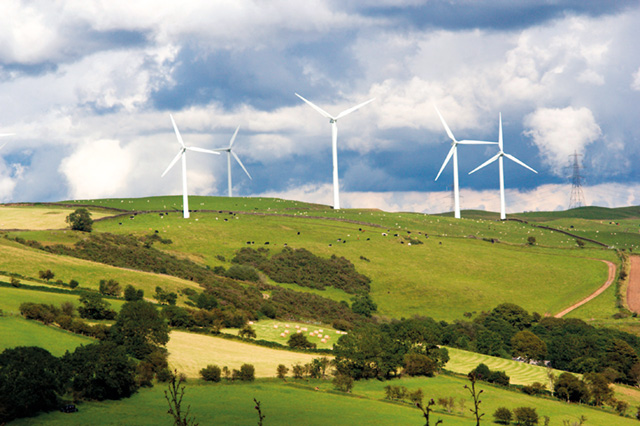
Anthony Ainsworth, COO at npower Business Solutions, suggests five key strategies that manufacturers should adopt to reduce costs and cut carbon. npower research shows that companies are overwhelmingly interested in decarbonisation investments.
Over the past two years manufacturing, like many industries, has had to negotiate a challenging economic environment. However, there are signs that confidence is returning to the market.
That said, for many, the impact of the Covid-19 pandemic has resulted in even greater scrutiny on spending, particularly when it comes to sustainability initiatives. However, the Make UK report also showed that the recent COP26 climate conference had resulted in many manufacturers accelerating their net zero progress.
For energy intensive industries like manufacturing, whose energy spend may account for more than 10% of business overheads, having a robust approach to reducing energy usage and carbon emissions can pay dividends – particularly in the current volatile wholesale market.
For us, there are five key strategies to take that will reduce cost and carbon:
1. Invest in energy efficiency
When it comes to energy efficiency and low-carbon investment, there is often the misconception that it will immediately require major capital expenditure. This is not always the case as ‘quick wins’ such as changing lighting or automating temperature control can result in significant energy savings without much upfront cost.
2. Consider sustainable on-site generation
Our research – ‘Plot Your Path to Net Zero: A Focus on Sustainable On-Site Generation for Manufacturers’ – showed that over 73% of manufacturing respondents said they had already invested, or were planning to invest, in renewable on-site energy generation. There are several benefits of on-site generation from an environmental, commercial and reputational perspective. As well as reducing emissions, it makes businesses less reliant on the grid, mitigates against price changes – something that has become increasingly important in recent times – enables greater control of energy consumption, and provides future revenue opportunities by becoming a flexible asset.

industrial and commercial buildings
3. Consider a Power Purchase Agreement (PPA)
Our recent research revealed that manufacturers overwhelmingly support investing in decarbonisation. That said, investigating alternative ways to fund capital projects – such as government grants or other finance options – could help to reduce the financial impact. For example, PPAs can help fund on-site generation with minimal financial risk, and there are also flexible funding options available for organisations that may want to switch from a PPA to owning an asset during the PPA’s term – just speak to your energy partner to see what the opportunities are for your organisation.
4. Get your data straight
Net zero targets mean understanding exactly where and how you are generating emissions. A sophisticated energy management system will help you monitor power and gas consumption throughout your organisation – and the related emissions. Sub-metering can also help to provide more granular detail about specific energy uses, such as machinery, lighting, or temperature control. This will enable you to accurately track reductions and impacts.
5. Understand your whole carbon impact
In addition to what businesses can do to decarbonise their own operations and power supply, it is also important to address the full range of emissions throughout the value chain. Accurately reporting on Scope 3 carbon emissions, which are the indirect emissions that occur both upstream and downstream in the value chain, as well as Scope 1 (direct) and Scope 2 (power-related), is increasingly becoming a key part of business’s sustainability plans, particularly if they have set carbon reduction goals through the Science Based Target initiative (SBTi). Although not yet mandatory to report, Scope 3 emissions can account for up to 90% of an organisation’s carbon footprint, and can be a complex area to navigate. Our guide to Scope 3 emissions is designed to support businesses, and ensure they focus on the most relevant areas to them.
Plotting your path to net zero
The road to net zero will not be easy. However, from starting with relative ‘quick wins’ in terms of energy efficiency, to exploring models such as PPAs for on-site generation, to measuring their carbon impact across the whole value chain, there are plenty of opportunities for manufacturers to demonstrate their commitment to sustainability.
npowerbusinesssolutions.com | t: 0800 677 1611

